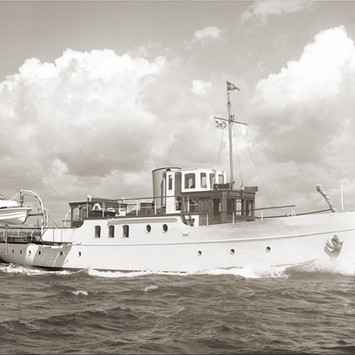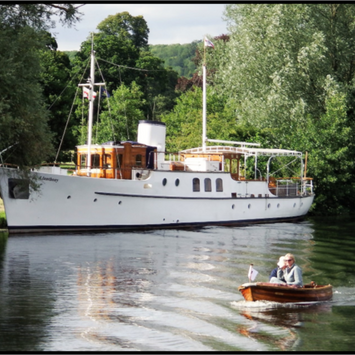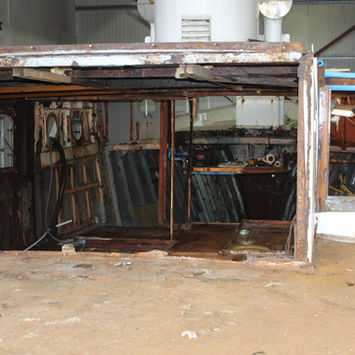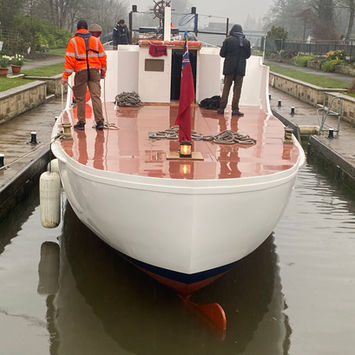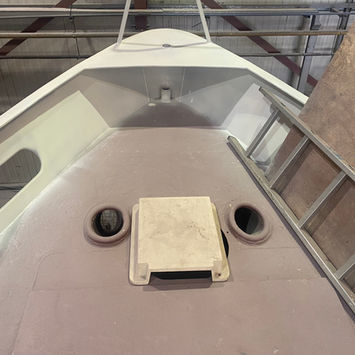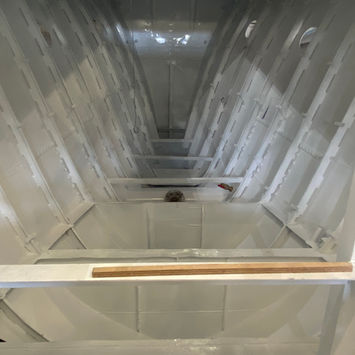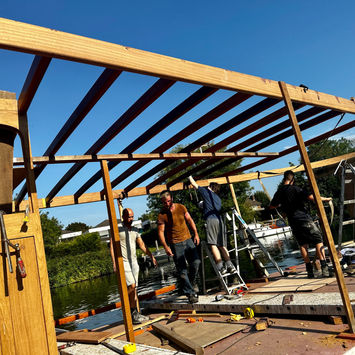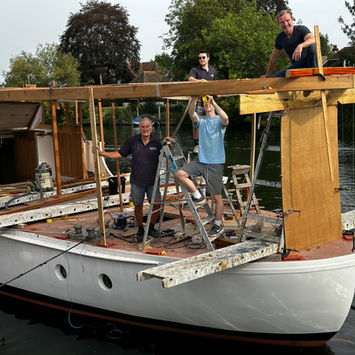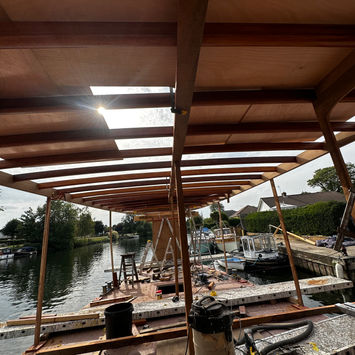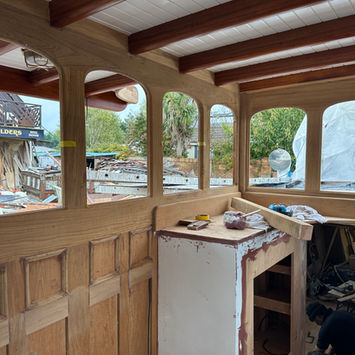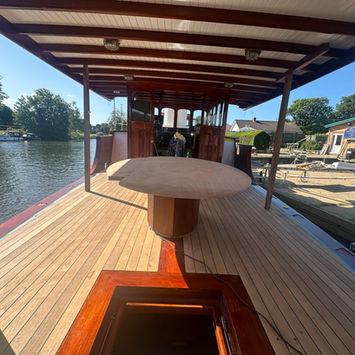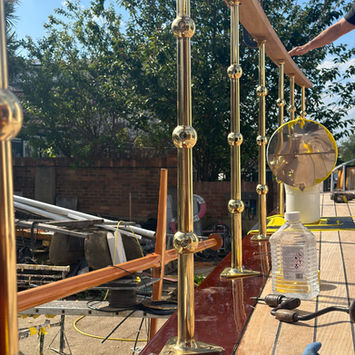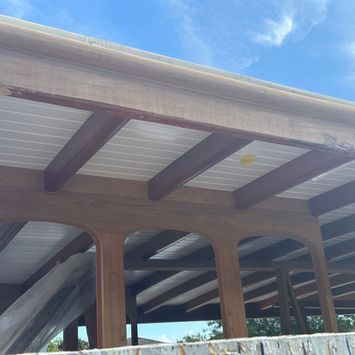Mai - Juin
1940
The Association of Dunkirk Little Ships

A D L S

LLANTHONY
Type: Motor Yacht
Length: 77 ft 5 ins
Beam: 14 ft 6 ins
Draft: 5 ft 5 ins
Displacement: 61 tons
Engine: 2 x Doosan l126ti 360 HP
Construction: Steel
Builder: Camper & Nicholson
Year: 1934

HISTORY
Built in 1934 by Camper & Nicholson for Lionel Beaumont-Thomas, a well-to-do -Welsh businessman, British Army officer, and politician. Named Llanthony after a small Welsh town and priory in the south of Wales where they lived.
After many years moored in London while Lionel Beaumont-Thomas was a member of parliament, she was acquired by Lord Astor. It is rumored Lord Astor helped the romance of Lady Simpson and King Edward onboard.
She was requisitioned in 1939 by the Admiralty, and after transfer to Ramsgate was placed under the command of Sub Lieutenant Robert Timbrell, only aged 20, of the Royal Canadian Navy
Rear-Admiral Robert W. Timbrell of the Royal Canadian Navy (Retired) was a newly-fledged Sub-Lieutenant stationed at Whale Island, Portsmouth, in May 1940 when he was summoned by an old Naval Captain sitting at his desk with a pile of paper in front of him. Twenty young officers had been told to report rather hastily after getting their gas masks, toothbrushes and shaving kit and they wondered what it was all about. Robert Timbrell knew better than to ask an irritable old Captain for details when he brusquely told him "to join the Llanthony". He had no idea what kind of ship this was and was amazed when he discovered he had been chosen to command her. He was even more astonished to find that she was a gentleman's yacht built for Lord Astor of Hever Castle and ill-equipped for naval duty. Her compass had not been swung and the only armament was the 1914 Colt 45 on Timbrell's leather belt.
With his crew of two civilian diesel engineers from London Transport and six sailors from Newfoundland (they were actually lumberjacks), he was ordered to proceed to Ramsgate where the yacht was fuelled and provided with charts. They were then told to set a course for Dunkirk. There they were to anchor off the beach and embark as many troops as they could using the two tenders swung from their davits.
On the way, they encountered a strange variety of craft: sailing yachts, mud hoppers, and Thames pleasure steamers. One of these they found broken down halfway across. This boat was loaded with troops and so they towed her all the way back to Ramsgate.
Forty years later, Admiral Timbrell told his story to Cameron Graham of the Canadian Broadcasting Service:
"It was a very shallow beach and at low tide, the water went out a long way. We were being shelled by the Germans, the town was in flames and after we had anchored, I sent the Petty Officer in with the boats; I stayed with the yacht. We could take about 120 on each trip and our instructions were to return as soon as we were loaded. We did that for a couple of trips. Then, on the third or fourth trip, we got bombed. Although the RAF were doing a marvellous job, the odd German got through. We were hit on the fo'csle. I lost about five of the crew and both my anchors snapped. The fuel tanks were forward of the engine room and the fuel pipes were severed so that both engines died. We drifted up on the beach. It all happened so quickly - one minute we were there and the next we were damaged, drifting and running aground.
It was a sunny afternoon and there were shells falling all the way down the beach with thousands of soldiers asking to be taken back to England. It was Day four of the evacuation and a stream of ships were going in and out. We drove some trucks into the water to form a small jetty. Then, at high tide, we could go alongside the trucks and men could walk on top of them and jump aboard.
While I was high and dry, I heard the English voice of a sergeant marching some troops down, calling out the order to halt. He was tired and his uniform was not parade ground standard, but he was still smart. He turned out to be from a Guards regiment. He asked if he could help and I told him to get a Bren-gun carrier and drive it out as far as he could in the water until the engine stopped so that I could use it to anchor by. That is what he did, and my two civilian diesel engineers repaired the fuel pipe, got the capstan going and winched us off. They put a plate over my bombed fo'cs'le and we sailed back to England.
By then I was an old hand, in the eyes of the authorities, so I was given four trawlers to add to my fleet. They had come down from Scotland and their old skippers had twenty years' experience - more sea time than I will ever get in my life.
I told them the form: 'We'll sail from Ramsgate. You stay close to me and we will go straight into Dunkirk, anchor, load, and come back.' As simple as that. We sailed by night and loaded by day because at night the German E-boats were coming down the coast. My Guards sergeant had got me some Bren guns and anti-tank weapons so now the Llanthony was armed with something more than my Colt 45. The trawlers stayed close to me - almost too close - and the port one went over a mine. She disappeared in a flash and we were not able to pick up survivors. The rest of us did two or three more trips. On one of them we had a fight with an E-boat. Thanks to my sergeant and his troops we were able to hold it off and they were surprised at our volume of fire. The Guards sergeant stayed with me for the whole time. While we were on the beach, one of the soldiers came towards us on a zig-zag course which miraculously avoided all the German shells. This was not good fieldwork, but due to a whole day spent in a French pub! He was drunker than anyone I have ever seen, and he told us not to go back to England without him. He said he would come back with his ticket. He staggered back to his pub and returned with a case of brandy. 'Here's my ticket, sir, to get back to England. Don't leave me behind. With this, he shoved his case of brandy aboard and fell asleep in the wheelhouse.
Our last trip was the tightest. The Germans had started to enter the town and to close the ring around Dunkirk. There was no way we could return anymore. Back at Portsmouth, I had a job to find anyone who would take over Llanthony from me. She was beaten up with bullet holes in her funnels and her boats were smashed. We took off the Bren-guns and anti-tank weapons as well as our case of brandy and tried to get back to Whale Island, three and a half miles away. I stopped a bus and asked the conductor the best way to get back to our ship. The conductor said, 'Have you just come back from Dunkirk?' and when I told him we had, he walked around to the front of the bus and told the driver to take us there - with apologies for the detour to the civilian passengers. We got back to Whale Island complete with the brandy despite some protests concerning our army crew from the duty officer."
The Llanthony rescued 280 troops from Dunkirk and Lieut. Timbrell was awarded the Navy's Distinguished Service Cross. The Guards sergeant got the DSM - a rare naval award for a soldier and the first Canadian to receive this award.
Between 1985 and 1993, known as the Golden Era, she cruised between Greece and Turkey as an elegant charter yacht. In 1995 she was discovered lying in Rhodes harbour in an extremely dilapidated state by her present owner Ms. Nicola McGrail. She was put to sail on one engine and taken to Marmaris in Turkey in 1995, where she underwent extensive renovation and the complete rebuild of her Daimler-Benz engines. She has become a showpiece at Netsel Marina, Marmaris, and retained many of her original fittings. She returned to British waters for the first time in thirty years to attend The Diamond Anniversary Reunion in June 2000 and crosse with the fleet over to Dunkirk that year for the 60th Anniversary.
Unfortunately, eventually, the years caught up on her and despite many a caring owner she became too much and ended up on the Henley reach of the river Thames in desperate need of restoration. In 2019 she caught the eye of a local man, new to the area, after some investigation heard she was potentially for sale to the right person.
Her new prospective owner had fallen in love with her iconic style and beauty, and so after some negotiations, he purchased her and thus began the restoration of her life.
The work started in Autumn of 2019 when she was delivered to Gillingham in Kent. Where 1/3 of her steel was replaced above the water line. The project incurred heavy delays to the schedule due to the Covid Pandemic which hit in February 2020.
The rest of the restoration was undertaken by Dennetts in Chertsey and she arrived a an empty steel hull void of any superstructure or interior. She was delivered with a makeshift steering position on her mid-deck. During this journey, it became apparent that her two Caterpillar engines would need to be replaced and all of her electrical systems. She arrived March 22nd 2022 and works started in pulling out her old engineering and cabelling and relacing her systems before the restoration of her interior and exterior.
As with many of these old ships after multiple owners and lives, they can lose their original identity with cabin extensions and alterations. The main goal of her exterior renovations was to regain her original beautiful lines and replace her iconic Camper and Nicholson superstructure. Her wheelhouse and cuddy were newly built with 2” thick teak and each detail is taken from her original design, down to the beadings and radius of her iconic windows. Inside, she is an elegant and sophisticated gentleman’s yacht from the era. The interior brief was to transform the somewhat random and claustrophobic interior into a spacious open, family-friendly yacht. Her interior was inspired by the elegant art deco steamships of the era and is lined with American black walnut with brass inlay. Combined with her completely new engines, electronics, plumbing, air conditioning and kitchen, Llanthony is future proofed.
Arguably one of the most decedent restorations of a Camper & Nicholson traditional motor yacht. Llanthony is sensational design masterpiece: Iconic elegance of the 1930s will never go out of style combined with a contemporary narrative has given this historic Dunkirk Little Ship a timeless luxurious elegance which will ensure she survives for another 100 years.
ADDITIONAL INFORMATION
Past Owner Ray Paton
9th March 2011
Hi, I’m Ray Paton, I owned Llanthony from 1984 till 1995; Luke and Bruce worked for me also Mick, Larry and Dave all in their turn. I still have quite a bit of her history. She was once owned by Lord Astor who sold her to Baron Kroniker who was military-attaché for Belgium during the war. He took out the original Glenifer engines and replaced them with the Daimler Benz that she has today. He also had extensive work carried out by raking the bows from the original bluff bows she had. I have lots more info. If anyone is interested. Best wishes to Ms McRath who bought her from me. Best wishes to all those who worked on her and did their part in preserving this tiny but very important part of British shipping history. Sincerely Ray Paton
Captain - 1990- 1991 - Luke Tickner
22nd June 2009
I skippered Golden Era in 1990-1991, based in Rhodes Greece. I removed both engines and they were re-bored: crank and pots (20 thousand"). I then made the first charter with her. In the following years, she made many more.
Prior to myself skippering her, Bruce, a kiwi, brought her from Cyprus in the mid 80's where she had been lying 'up a creek with grass growing from her decks.' He made the first attempts at a restoration. During the voyage between Cyprus and Rhodes, he drove her backward for part of the way, using her engines to steer her by as she lost her rudder power. The canoe stern assisted in this.
Further historically, she had been used as accommodation during oil exploration in North Africa, and then running refugees from Lebanon to Cyprus. Luke Tickner, Perth. Australia, 2009.


